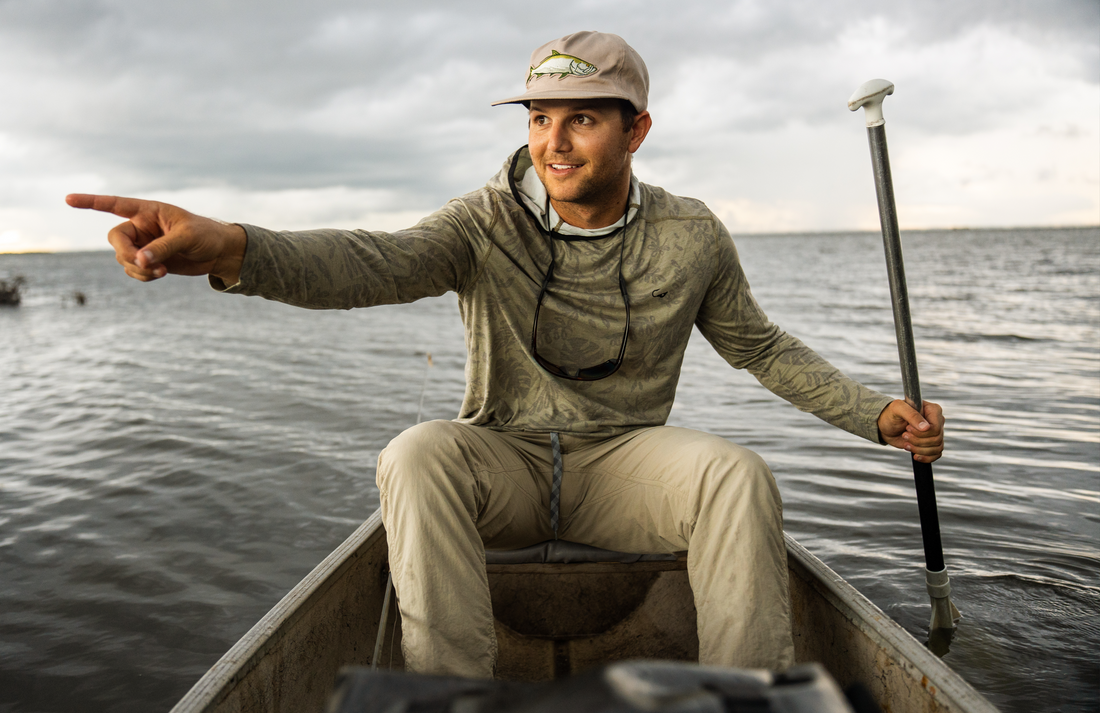
Are UPF Shirts Better Than Sunscreen?
Share

At Jigalode, we were born and raised on the waters of South Florida. We've experienced firsthand the relentless sun that accompanies every fishing trip. From the crystal-clear flats of Biscayne Bay to the legendary fishing grounds of the Florida Keys and everything in between, we've navigated it all.
It's this knowledge of our environment that inspired us to develop the Mighty Jig Performance Hoodie. Crafted specifically to battle the unforgiving elements of some of our favorite fishing spots, this hoodie is our solution to staying protected and comfortable under the scorching South Florida sun.
From time to time we encounter customers who are unclear on what UPF and SPF actually mean and what makes them different. No worries, we’re here to help you cut through any confusion because, let's face it, we'd rather be fishing than decoding sunscreen jargon.
What is UPF?
UPF, or Ultraviolet Protection Factor, is a measure of how effectively a fabric shields your skin from the sun's harmful UV radiation. It's essentially the clothing equivalent of SPF (Sun Protection Factor) for sunscreen. UPF ratings indicate the level of protection a garment provides against both UVA and UVB rays.
The UPF rating system works like this: A garment with a UPF rating of 30, such as the Mighty Jig Performance Hoodie, allows only 1/30th of the sun's UV radiation to pass through, blocking out approximately 96% of UV rays. Therefore, the higher the UPF rating, the greater the level of protection the clothing offers.
UPF is determined through rigorous testing in specialized laboratories. The fabric is exposed to simulated sunlight, and the amount of UV radiation that passes through is measured. Based on this measurement, the fabric is assigned a UPF rating.
What is SPF?
SPF, or Sun Protection Factor, is a measure of how effectively a sunscreen protects your skin from sunburn-causing UVB rays. It indicates the level of protection the sunscreen provides against UV radiation. The SPF rating system works by comparing the amount of time it takes for skin to burn with and without sunscreen. For example, if it typically takes 10 minutes for your skin to burn without sunscreen, using a sunscreen with SPF 30 theoretically allows you to stay in the sun 30 times longer without burning, or approximately 300 minutes.
Understanding SPF ratings is essential for effective sun protection. Choosing a sunscreen with a higher SPF offers greater protection against UVB rays, but it's important to remember that no sunscreen provides 100% protection. Additionally, SPF only measures protection against UVB rays, so it's important to choose a broad-spectrum sunscreen that also protects against UVA rays.
Here's something important to consider: According to a study by the Bonefish & Tarpon Trust, fish that were exposed to sunscreen during catch and release, developed infections from too much slime removal due to the sunscreen. The study found that oxybenzone and zinc containing sunscreens removed mucous (slime) leaving the fish at risk of these possible infections. Ultimately, wet hands resulted in the least amount of mucous lost.

Whether you opt for a quality UPF shirt or choose to stick to classic sunscreen, it’s important to stay protected when spending time under the sun. We know a thing or two about a good sunburn and that’s why we crafted the Mighty Jig Performance Hoodie to be our personal UV bodyguard.
What sets the Mighty Jig Performance Hoodie apart isn't just its UPF 30 rating; it's the attention to detail that, in our opinion, makes it a fishing essential. With its lightweight and breathable design, this shirt keeps you cool and comfortable, even when the sun is blazing down. And let's not forget the Stay-Put hood, perfect for providing extra protection for your head and neck on those sun-drenched days. Want to find out more? Get yours here.